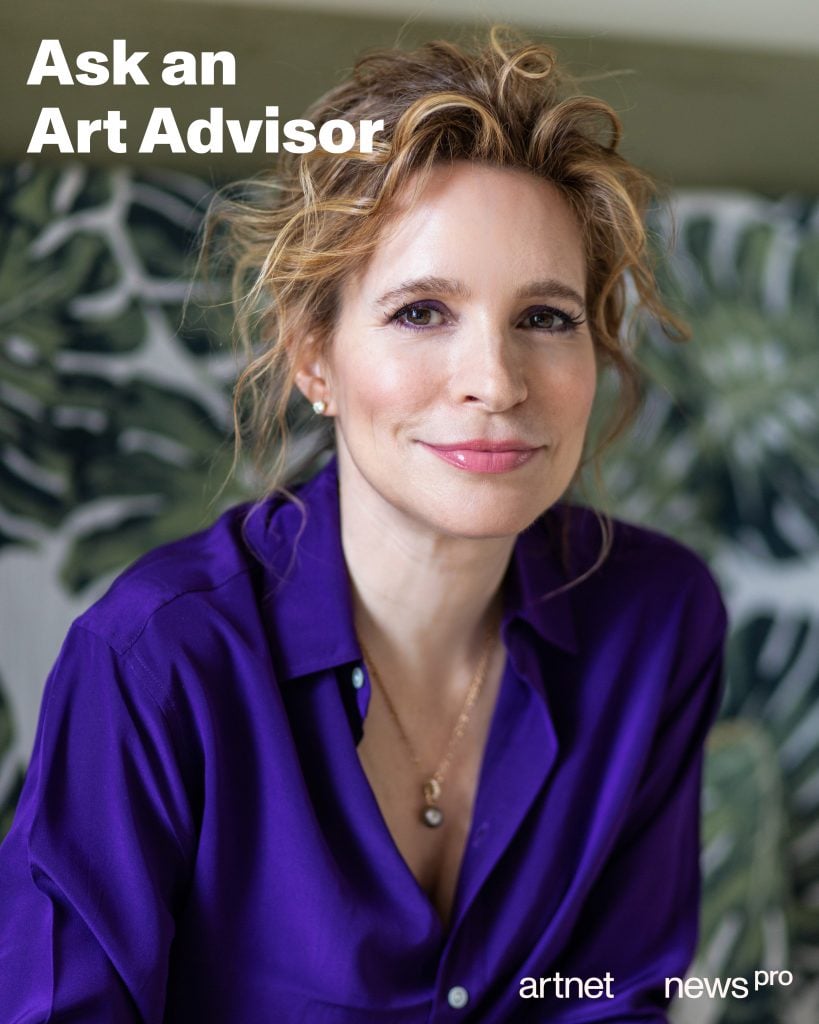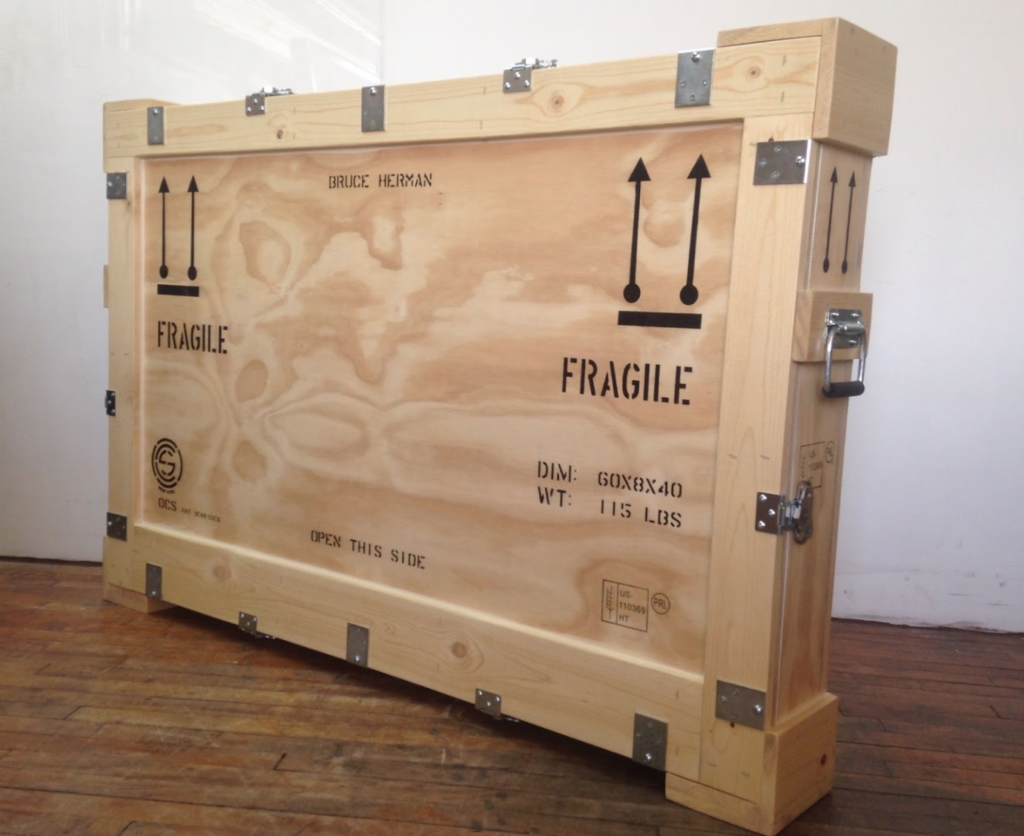Ask an Art Advisor
Should I Help a Big Client Avoid Paying Sales Tax? + Other Art-Trade Questions, Answered
Plus, how expensive must art be in order to serve as an investment, and how do I get a gallery to answer my emails?

Plus, how expensive must art be in order to serve as an investment, and how do I get a gallery to answer my emails?

Wendy Goldsmith

What’s the smartest way to spend $20,000 on art? Is it a bad idea to help a big client avoid paying sales tax? How do I get an invite to a gallery dinner? Every month in Ask an Art Advisor, our go-to expert Wendy Goldsmith invites you to share your most pressing questions about navigating the art market—and she’ll draw from her decades of experience for the answer.
Do you have a query of your own? Email [email protected] and it may get answered in an upcoming article.
A longtime client in New York asked me to help them avoid paying sales tax on an acquisition by invoicing a work to their second home out of state, shipping an empty crate to the same address, and allowing their assistant to pick up the actual work for install in their New York residence. I don’t want to be an accessory to fraud, but I also can’t afford to lose this sale. What should I do?
Death and taxes. The two things unavoidable in life, yet some clients still feel the rules for the latter don’t apply to them. Way back in 2002, Dennis Kozlowski, the then CEO of the massive conglomerate Tyco, failed to pay $1 million in taxes on several paintings he purchased in New York, including a Monet and a Renoir, when he shipped their empty crates to his home in New Hampshire while the works themselves were quietly hung on the walls of his Fifth Avenue apartment. Once New York State found this out, they became wise to the whole scam and expanded their investigation to a dozen galleries and 300 collectors, resulting in state and city taxes and fines of $37.5m. (Ultimately, Mr. Kozlowski was fined hundreds of millions of dollars in the broader financial scandal and was only released from prison in 2014.)
I would sit your client down and gently remind him of this particular case alone, explaining why what he is suggesting would never be a good idea. If he still insists, delicately say that you’ll have to stand aside for this one. He may be the type who does not like to hear no but deep down, he’ll respect you for your judgment and it may even sway him to reconsider.
While it will no doubt be painful to lose a commission in the short term, you have to look at the big picture here. Not only will this decision serve to protect your most valuable commodity, your reputation, but would also prevent the no doubt endless legal fees that would wipe out any gains you may have made. And the best bonus of all? You’ll be able to sleep at night.

An OCS Art Services shipping crate. Photo by Nicole Scuderi, courtesy of OCS Art Services.
As an entry-level collector, I often get ghosted when I inquire through a gallery’s general info email. How can I reach someone who will actually respond to me, and how do I get them to engage?
While everyone loves the speed and efficiency of electronic communication, it will never trump human contact. When I think of the avalanche of emails I receive from galleries every week, I can only imagine what it’s like in reverse, so it’s very easy for your message to simply fall into a cyber black hole. If it’s a smaller gallery, they may not even have the staff to keep up with all the enquiries they receive, especially if it’s regarding an artist du jour. The best way to get noticed would be to actually visit the gallery and ask to speak to someone IRL. If that’s not geographically possible, pick up the good old fashioned telephone and ask to speak to a salesperson, perhaps looking at the gallery’s website in advance to see if there is a specific name to ask for.
To really get yourself noticed, explain to them that you are a new collector, how interested you are in the gallery and their program, and identify their specific artists you like and why. So often the general emails they are receiving are from people who see artists in their stable as commodities and just want anything going, so they’ll be delighted to meet a new collector with true intentions and will want to share their knowledge as well. As a follow up, go to their gallery openings, their booths at art fairs, let them see you on their radar. You’ll have your emails returned in no time.
Is it true that the safest art investments are works that cost $10,000 and under, or more than $100,000?
A very senior colleague once told me that he never looks at an artist until they reach $100,000. I thought he was a bit mad (so much else he was missing out on!) but I know what he meant. It’s almost like the numbers are a validation. This was a little while ago now, and an artist can get to $100,000 overnight so that might not remain the best indicator. With all the madness in the salerooms lately, it’s easy to forget about the cautionary tales of artists such as Lucien Smith and Christian Rosa, crashing from dizzying heights, almost as soon as they achieved them. At the other end of the spectrum, my colleagues and I often joke that 20 is the new five. In the past, you could have fun taking a gamble‘ when most interesting entry level artists cost around $5,000. Now that figure is more in the region of $20,000 for many artists I’ve never even heard of, and who are often fresh out of art school. But practical factors come into play here as galleries suddenly have such huge overheads, from massive rents to increased shipping costs, which have to be covered somewhere. So is the piece really “worth” $20K, or is that just what you need to pay for it? If that’s an affordable gamble, great, but those $20Ks soon add up on works that may not stand the test of time. Sadly, I feel the $10K-and-under ship sailed a long time ago. Nevertheless, plenty of scope remains in the $10K to $100K range, once you do your research.
No formulas will ever apply to the art world, and that’s exactly what keeps everyone so addicted.

George Rouy, Grounds of a Broken Heart (2022). Courtesy Peres Projects, Berlin, Seoul, Milan.
From fashion to food, here are three things on Wendy’s radar this month
Wendy Goldsmith is a former International Director at Christie’s in both New York and London, who now runs London’s Goldsmith Art Advisory. You can also find her on Instagram @wendy_goldsmith.